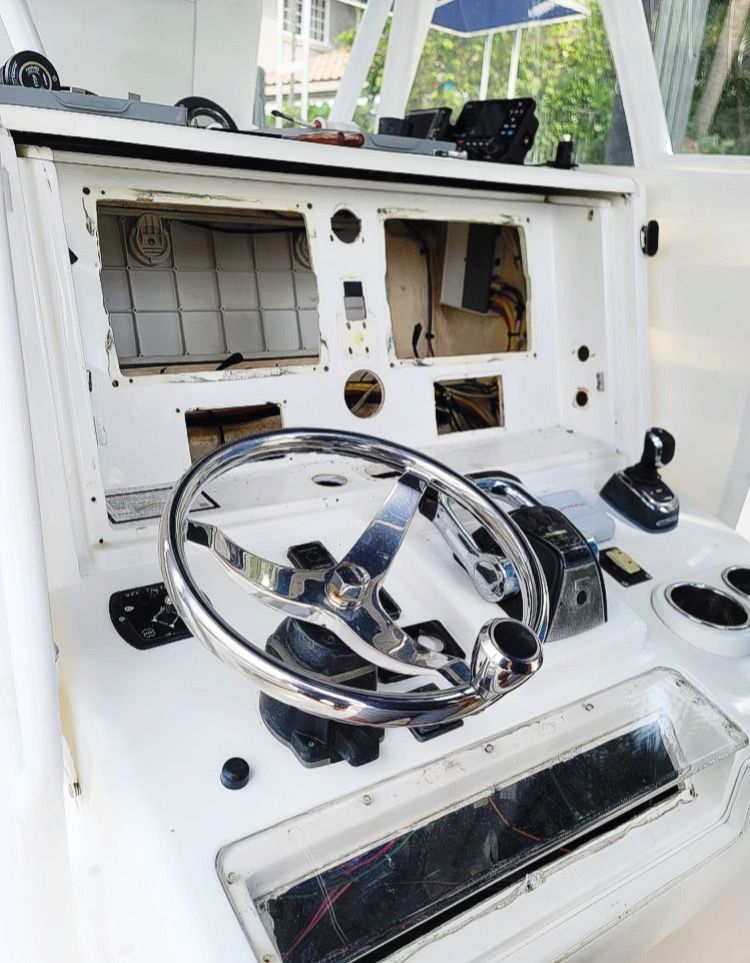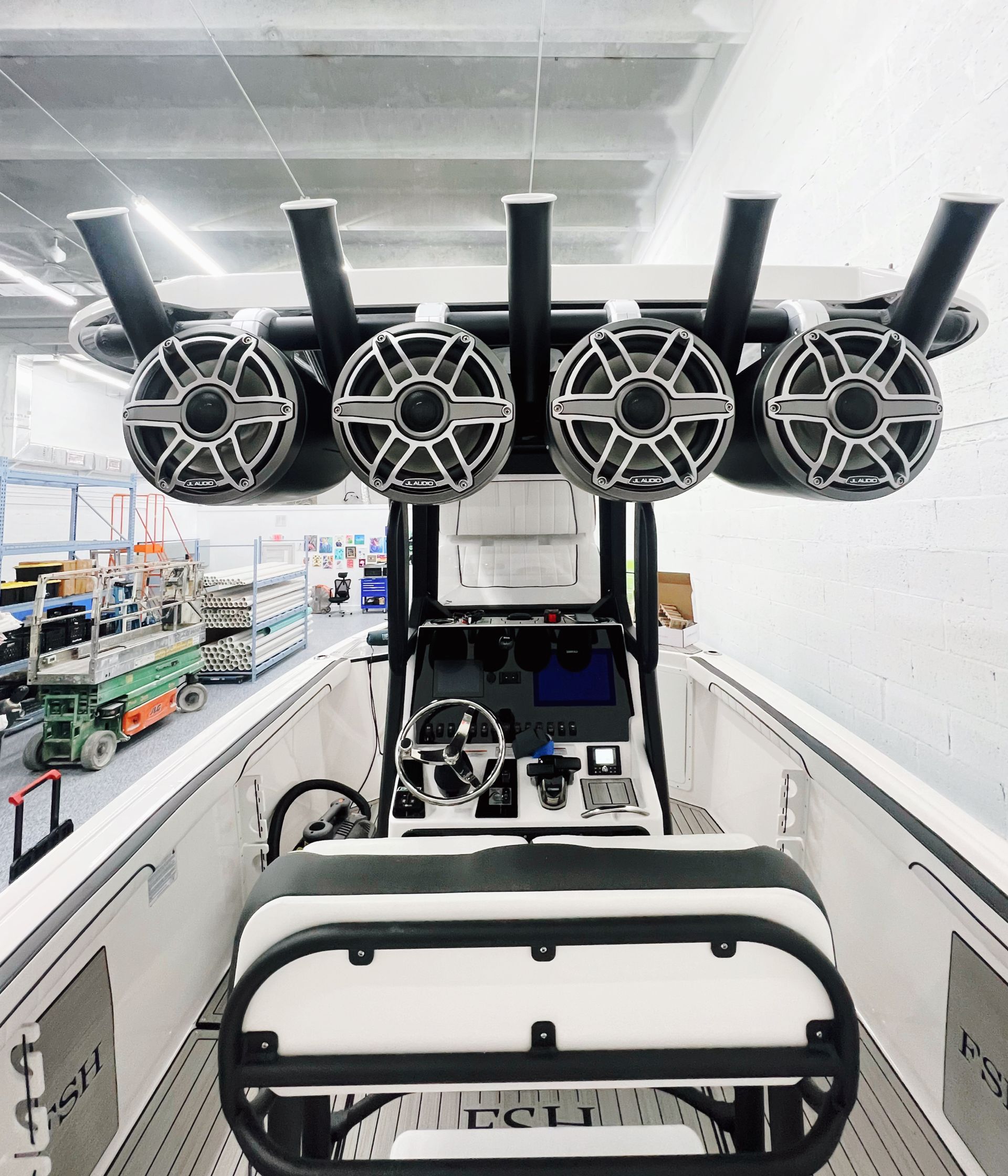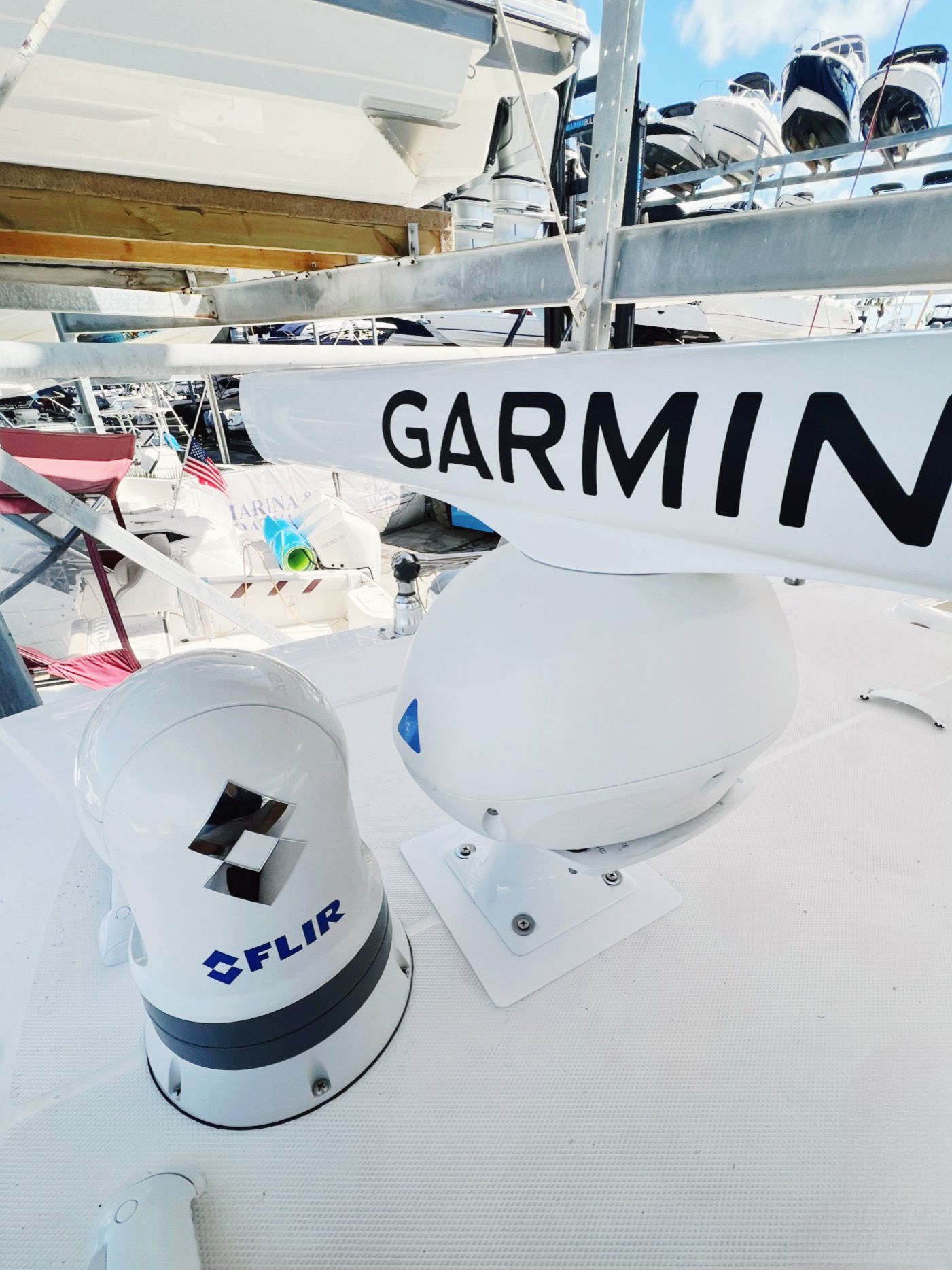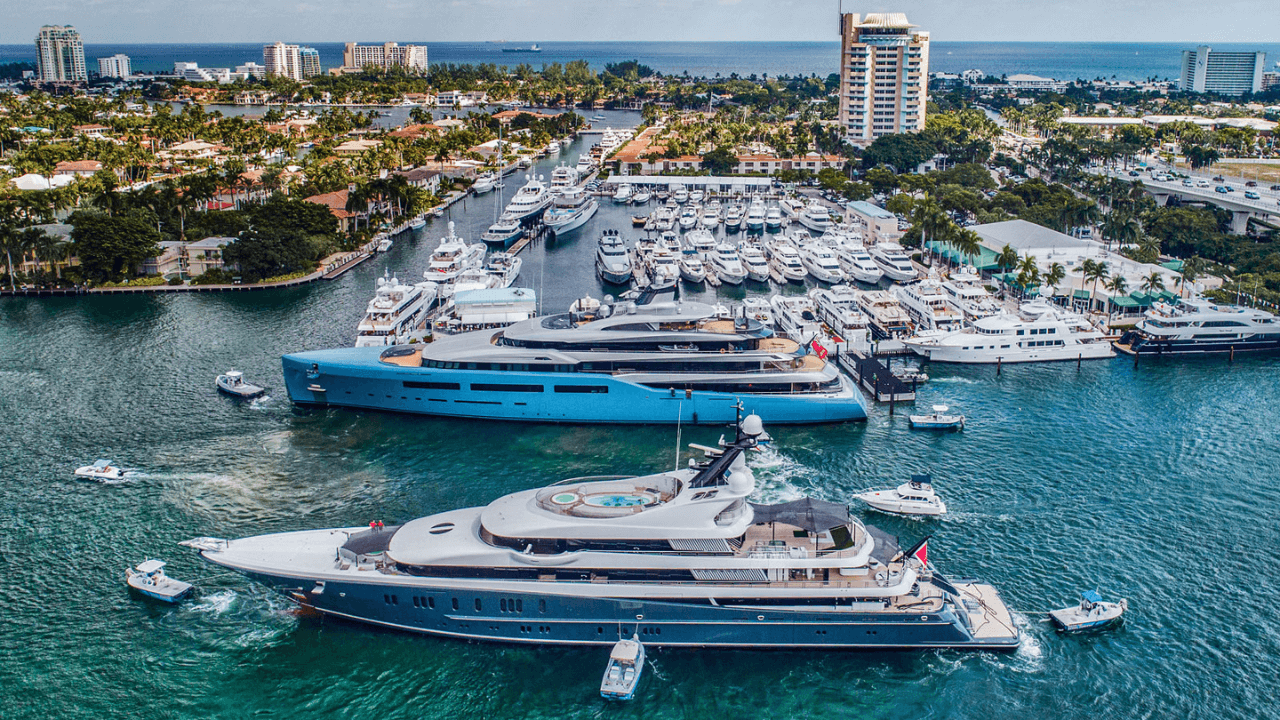10 Tips for Optimal Marine Electronics Maintenance (2023)
As boating enthusiasts and professionals, we realize the importance of maintaining our marine electronics efficiently.
Without routine maintenance, our equipment may fail us when we need it the most.
In today’s maritime environments, the relevance of electronics such as sonars, radars, fishfinders, chartplotters, and the likes cannot be overstated.
Thus, preserving them to ensure optimal performance is critical.
This article is aimed at providing valuable insights into the best practices for such maintenance tasks.
We’ll look into specific guidelines, methodologies, and precautionary measures to ensure your electronics run smoothly every time you’re out at sea.
Tips For Optimal Marine Electronics Maintenance
1. Clean Devices Regularly with Freshwater and Cloth.
Cleaning your electronics with freshwater and a soft cloth is an essential step in ensuring their longevity and function within a marine environment.
Being exposed to saltwater can result in corrosion and damage to the electronic devices over time.
This makes the act of regular cleaning not just recommended, but necessary for marine applications .
Salt deposited by ocean water can cause a myriad of problems for electrical connections, interfering with the smooth operation of your vessel’s electronics.
The residue left behind by saltwater can cause conductive pathways to form on the surface of your devices.
This can lead to short circuits , device malfunction, and in severe cases, irreparable damage.
By regularly cleaning your devices with freshwater, you are actively removing salt deposits and reducing their potential harm.
By watching the integrated video, users will learn the correct way of cleaning and disinfecting electronic devices.
It gives practical tips and techniques , which can be applied to marine electronics maintenance also.
Apart from freshwater, it is also recommended to use a soft cloth for cleaning.
This helps avoid the risk of scratching or damaging the device surfaces, ensuring your components remain unharmed during the cleansing process .
It’s not only about the cleaning but also the gentle, careful way of doing it, considering the fragility of electronic devices .
Remember, your goal when cleaning is not just to remove dirt, but also to preserve the integrity of the device.
No amount of software update can fix physical damage incurred due to negligence in device handling and maintenance.
As a rule of thumb, always rinse off your marine devices with fresh water after every voyage .
In this way, you’re aiding in the preservation of your electronic system’s lifespan , proving that consistent and appropriate cleaning is key to durable and effective marine electronics.
2. Avoid Direct Sunlight Exposure to Electronics
Keeping your marine electronics away from direct sunlight is an essential part of their optimal maintenance.
The damaging rays of the sun can influence the performance and longevity of your navigational systems, communication devices, and entertainment systems.
The sunlight can cause the breakdown of the materials used in the construction of the electronics, including the screen and internal components.
It is not simply about keeping devices in the shade but understanding that proactive protection of your electronics from excessive sunlight is crucial for maintaining their functionally.
By providing adequate shading, or using accessories such as protective covers , you’re also maintaining the visibility and legibility of your device screens.
Moreover, Ultraviolet (UV) radiation from the sun can cause harmful effects, notably, it can cause colors to fade and materials to degrade.
Remember, overheating caused by direct sunlight exposure can drastically lessen the life expectancy of the electronic devices.
Accumulated heat can cause the inner components of the devices to expand and contract , which can lead to physical damage and operational malfunctions.
Direct sunlight can seemingly ‘bake’ your electronics, leading to issues such as display malfunctions or touchscreen sensitivity problems.
It’s not uncommon for devices to shut down completely if they become too hot because of direct sunlight exposure.
Make a habit of turning off the devices or setting them to sleep mode during peak sunlight hours, if not in use.
This technique significantly helps to avoid overheating and the associated battery drain.
Consider venting or cooling systems to combat the build-up of heat in confined spaces like cabins or helm stations, if your marine electronics are permanently installed.
This preventive measure adds a layer of security against damage from heat and subsequently helps to extend the lifetime of your pricey electronics .
After all, prevention will always be better than cure , when it comes to the upkeep of your marine electronics
3. Ensure Secure and Correct Cable Connections
To maintain your marine electronics, one crucial aspect is to ensure secure and correct cable connections .
The performance and reliability of these devices often hinge on the integrity of their electrical connections.
Loose, incorrect, or faulty connections can introduce instability and even cause complete failure of your system.
You should regularly check and secure all cable connections as part of your marine electronics maintenance routine.
This video offers a practical demonstration of how to work with and maintain different types of cable connections.
Watching it may help you understand better the nuances of dealing with marine electronic cables and enhance your ability to manage them effectively.
It is essential to comprehend the correct pairing of devices and cables.
A mismatch can lead to mishaps ranging from minor inefficiencies to potential catastrophe.
Always refer to the manufacturer’s instructions when determining and securing connections.
Knowledge of the configuration specifics of your devices and using the correct cables is vital in securing all connections accurately.
In the sentence above, the importance of understanding the specifics of your devices is emphasized.
Cable management is a critical yet often overlooked aspect of maintaining marine electronics.
A sound knowledge of your devices’ configurations enables you to secure connections correctly.
Always unplug and replug the cables periodically to ensure they are not loose or corroding.
Visual inspection is required frequently since dust, salt, and moisture are known to interfere with secure connections.
Another crucial consideration is the handling of cables .
Daily mishandling and incorrect storage can cause damage and degrade the quality of connections.
The correct handling and maintenance of cables ensure optimal marine electronic device performance.
These tactics contribute to the overall longevity and efficacy of your marine electronics system.
4. Waterproof all exposed electronic connections
Waterproofing exposed electronic connections is an essential practice in marine electronics maintenance.
Marine electronics often operate in challenging conditions where they are exposed to water and high levels of moisture.
Highly sensitive electronics can malfunction or get damaged when exposed to water and such conditions.
Ensuring a waterproof barrier for these connections can significantly increase the durability and lifespan of your electronic devices.
This statement indicates the importance of waterproofing in preserving the functionality and durability of your marine electronics.
If there is not effective waterproofing, moisture and water can lead to corrosion or short-circuiting in these connections, leading to device failure.
While most marine electronic devices come with some form of built-in waterproofing, this may not be sufficient for all parts, especially the exposed connections.
You might have to take additional measures yourself to enhance the waterproofing of such connections.
Use waterproof sealants, like silicone or polyurethane, to create a barrier and protect the connections.
Apply it to junctions and spots where cables meet the devices or join each other.
The selection of the right waterproof sealant is crucial: make sure that it is compatible with the electronics and does not cause damage to the device or wires.
Regularly check and maintain the waterproofed connections to ensure the seal remains effective over time.
Any damage or wear to the waterproof sealant should be addressed immediately , and the sealant reapplied.
Remember that any lapse in maintaining the waterproof barrier can expose your marine electronics to risk .
Always be proactive about waterproofing all exposed connections as a preventive measure in your maintenance routine.
Prevention is always better and often less expensive compared to facing equipment failure and then fixing it.
Finally, remember that effective waterproofing ensures optimal functioning and extends the life of marine electronics, preventing unnecessary repair and replacement costs.
5. Regularly Update Software for Chips and Maps
Maintaining marine electronics includes more than just routine cleaning and physical maintenance. One overlooked area is the software within the devices , especially the software for chips and maps.
As technology evolves, manufacturers often release software updates. These updates bring bug fixes, improve overall system performance and often introduce new features. It’s important to regularly update the software to avail all these benefits.
Regular software updating is just as essential as regular device cleaning.
Keeping your marine electronics and devices up to date helps them operate at their peak performance. This could save precious seconds when speed matters most, which is often at sea. This is why manufacturers continually roll out software updates.
Watching the above tutorial might provide you with useful insights on how to successfully update your marine electronics software. Walking through the update process, step by step, might take away any intimidation you might feel about updating software on marine electronics.
In order to make sure you are always running the latest software versions, it is recommended that you set up update reminders or if available, turn on automatic updates . This might prove extremely helpful in ensuring regular software updates.
Most devices generally have guides online on how to carry out the software updates. Not only does these guides give the basic instructions, it often features troubleshooting aids for when the process does not go as planned.
Before updating , it’s recommended to backup your current software in case an issue arises during the update process. A backup ensures you can revert to the previous version without any data loss.
For an update, you often need a stable internet connection and sufficient battery life on your device. An interruption during the update can cause failure which might lead to software corruption. So it’s better to have your device fully charged and connected to a reliable network.
Also, after the update, make sure you check the version to confirm if your software updated successfully. Sometimes, an update might fail without giving any noticeable signs, so by checking the version you can ensure the update was successful.
If a software update fails, don’t panic, usually, you can simply retry the update . If you continue experiencing issues, consider reaching out to the device manufacturer or a marine electronics expert for guidance.
Maintaining the software side of your marine electronics might seem challenging, but with a little diligence, it is an attainable feat. Hopefully, these tips help you in achieving the task.
6. Inspect for Corrosion Regularly, Remedy Immediately
Corrosion is a common challenge faced by vessels, as it is induced by the sea’s saltwater environment that is highly conducive for metal oxidation.
Thus, regular inspection for signs of corrosion on marine electronics is of vital importance to preserve the function and integrity of these devices.
To do this, a comprehensive understanding of the typical signs of corrosion and the specific areas in which it most commonly occurs is needed.
These signs usually appear as discolouration, pitting, or a powdery or flaky substance on the surface of the metallic parts of marine electronics.
Visible damage to connections, wires, and cables can also indicate the presence of corrosion.
One of the most critical steps is to establish a schedule for frequent and thorough inspections specifically targeting those areas and components that are most susceptible to corrosion.
Having a regular inspection schedule helps in detecting early signs of corrosion before any consequential damage can occur.
This approach is a preventative measure that can significantly reduce the overall costs and inconvenience associated with major repairs or replacements due to late-stage corrosion.
Meticulous adherence to this schedule should be considered imperative rather than optional.
Upon the discovery of any corrosion, it is crucial to remedy the situation immediately .
The first step is often to thoroughly clean the area with a specialized cleaning solution designed to neutralize and remove the corrosive build-up.
Next, it is essential to identify and eliminate the root cause of the corrosion to avert recurrence in the future.
This could involve steps such as replacing corroded parts, sealing exposed connections, or enhancing the waterproofing in the corroded area.
If any components of the electronics are severely corroded, they may need to be replaced altogether in order to ensure the overall functionality of the system.
Finally, regular visual inspections should be complemented by a performance assessment to establish whether the corrosion has led to any decline in the electronic device’s operational efficiency.
By regularly monitoring the performance of marine electronics, one can get ahead of corrosion-related damage and implement the appropriate measures to guarantee long-term operational readiness of the equipment.
7. Avoid Abrasive Cleansers on Device Screens
The surfaces of marine electronics are susceptible to wear and tear, but applying abrasive cleaners can cause additional, unnecessary damage. Relying on harsh substances to clean the screen of any electronic device – including those onboard a marine vessel – can lead to permanent damage .
Screen protection should be the first line of defense against dirt, smudge, and potential scratches. Some manufacturers provide specially designed screen protectors that create a layer of protection against external elements.
While daily utilization of these devices is inevitable, it is essential to clean them regularly and correctly to maintain their optimum operation.
Instead of grabbing the nearest household cleaning spray, look for a screen cleaner specifically designed for electronic devices.
This specially formulated cleaning solution allows for safe and effective cleaning of your screens without the risk of causing micro-scratches or deteriorating the quality of the display over time. These substances generally come in the form of sprays or wipes.
In the absence of a specially formulated screen cleaner, a wipe-down with a soft, lint-free cloth slightly dampened with fresh water should suffice. It is crucial to avoid using paper towels, standard cleaning rags, or any similar items that could potentially scratch the screen.
For stubborn smudge or dirt, a mixture of mild soap and water can be used sparingly. This cleaning solution should be applied to the cloth and not directly sprayed onto the device to avoid water damage.
Embedded in this text, you’ll find a useful resource that offers handy tips and demonstrates the right way to clean an electronic screen. Adhering to the instructions provided could potentially save your devices from avoidable damage and prolong their lifespan.
The topic of maintaining marine electronics goes beyond only cleaning the screens. It is an all-encompassing task that requires specific methods and tools to ensure longevity and retain optimum functionality .
This section has focused on the importance of appropriate cleaning procedures to prevent damage to the screens, a critical component of marine electronics. Equally important are timely software updates, secure cable connections, regular battery maintenance, and overall care for every part of the device.
Therefore, it is highly advisable to keep this guide at hand and refer to it when maintaining your marine electronics. Each of these tips has been specially formulated to preserve the integrity of your devices and ensure they serve their purposes efficiently and effectively .
8. Keep spare parts for quick repairs.
The need for spare parts is inevitable in any situation, let alone in the specialized area of marine electronics . It’s one of the most crucial part of maintaining these devices as over time, parts can go bad or malfunction. When that happens, having a set of spare parts on hand ensures that you can maintain proper functioning without significant downtimes.
Keeping spare parts also provides a sense of security because you will always be ready for unexpected situations. The ocean conditions can be harsh and unpredictable, which can take a toll on the electronic devices. Having backup parts allows you to address any immediate damages quickly, reducing the potential for further deterioration.
By keeping spare parts, you’re not just safeguarding against sudden breakdowns, but you’re also extending the longevity of your marine electronic devices.
The quote above emphasizes the preventative role that spare parts possess in optimizing the performance of marine electronics. It’s not just a stopgap solution for malfunctioning devices but a strategic procedure that augments the overall durability of these devices. Essentially, having spare parts is like having a ready-made repair kit that safeguards your gear’s pivotal role during your marine ecosystem adventures.
Moreover, storing spare parts goes beyond simply having an assortment of extra pieces on hand. It involves a careful selection of the components that are often more vulnerable to damage. This selection should be based on the specific devices you have, their usage rate, and the environmental conditions often encountered.
Regarding financial considerations, although it may seem costly to purchase spare parts, it’s actually a cost-effective measure in the long run. It can save you from incurring the additional costs associated with complete equipment failure or premature replacement. It’s an investment that prioritizes sustainability and durability rather than the instant expense.
Prudent storage for these spare parts is equally important to maintain their integrity and usefulness . They need to be kept in dry, secure cases to prevent damage from saltwater and moisture, as well as from excessive heat and cold. Therefore, not only is it necessary to have spare parts, but these parts need to be well-kept and protected.
In addition, when the need for replacement arises, ensure that qualified personnel are handling the repair and maintenance process. Even with the appropriate spare parts, inadequate installation can lead to ineffective operation or even further damage.
Finally, maintaining an inventory list of the spare parts to monitor their usage, needs, and replacement times can be invaluable. This list can help you track which parts have been used, which ones need reordering, and when to perform regular checks on those spare parts.
Given all these points, keeping and properly managing spare parts are unquestionably essential strategies for maintaining and enhancing marine electronic devices’ performance and longevity .
9. Regular Battery Inspection and Maintenance
Given the central role that batteries play in powering marine electronics, undergoing regular battery inspection and maintenance is a pivotal aspect to ensuring the optimal performance, longevity, and safety of your marine equipment.
Maintaining the battery health is not only imperative for a smooth sailing experience but also vital in prolonging the overall life of the marine electronics.
Regular battery inspection is a preventative measure that can nip potential issues, which translate into bigger problems, in the bud.
A routine could include cleaning the battery terminals and checking for signs of wear or damage.
Poorly maintained batteries are not only inefficient but can also pose safety risks, such as leaks or even explosions.
Your marine battery is more than a power source; it’s a crucial line of defence. Regular maintenance isn’t optional—it’s absolutely essential.
By implementing a robust routine for battery inspections and maintenance, you are protecting not only your expensive marine electronics but also ensuring your safety on the water
Additionally, battery maintenance also includes regular charging and discharging to keep them functioning optimally as well as preventing them from going completely flat, which could diminish their overall lifespan.
So, don’t forget; upkeep isn’t only about cleaning and updating. Your batteries need attention too, and a little goes a long way.
In this video, you can learn practical and straightforward tips on how to inspect and replace a bad battery. It provides comprehensive insights into understanding the functioning of batteries and their maintenance.
Each battery is unique and different types require different maintenance routines, but the principle remains the same. Maintain your batteries well and they will serve your marine electronics optimally.
And the best part? Most of these routine checks and maintenance tasks are easy to implement and require minimal tools.
Remember, the power reliability of your electronics is only as good as your marine battery maintenance.
Regular inspection is a small task compared to the significant failure that could occur if neglected.
There are numerous guides available online that provide step by step instructions, but the ongoing practice of regular inspections, cleaning, and maintenance is the key to a healthy and efficient battery system.
10. Store Equipment Properly When Not in Use
Storing your marine electronic equipment properly when not in use is essential in maintaining its longevity and optimal functionality.
Electronics, especially those used in marine environments, are sensitive to damp and salty conditions, and poor storage methods can adversely affect their function and service life.
To effectively store your marine electronics, ensure that they are stored in a dry, cool and well-ventilated space to prevent the accumulation of condensation and excessive heat , both of which can cause premature failure and corrosion.
Proper maintenance of your marine electronics includes not just the activities around cleaning, inspection and updates, but also how they are stored when not in operation.
The importance of this statement underlines the need for appropriate storage methods. Optimal storage safeguards your equipment from uncontrolled variables such as moisture, heat and pests which might compromise their efficiency.
Additionally, prolonged exposure to such environments can have a detrimental effect, causing irreversible damage or making the equipment unsafe for use.
Another crucial factor in storage is the careful storage of cables and attachments. To prevent friction and tension damage, cables should be loosely coiled and stored separately from the device to avoid unnecessary strain and wear.
For devices with in-built batteries, it is advisable to remove the batteries if the equipment will not be in use for a long period.
This prevents any chance of battery leakage which could damage the device. However, do remember to store the batteries separately in a corrosion-resistant container.
Silica gel packets can be utilized to control humidity in the storage area, keeping condensation at bay.
Electronics are also susceptible to damage from dust accumulation. Therefore, devices should always be well covered to protect against dust when not in use.
If your marine electronics need to be transported, investing in high-quality protective cases is a worthy decision.
These cases not only protect the equipment from physical damage during transport, but also provide an excellent storage solution, protecting them from the harmful effects of ambient conditions.
When the equipment is not in use, it is essential to make sure that the device is turned off , and all cables are disconnected before storing. This prolongs battery life and reduces the risk of electrical faults.
Executing these measures goes a long way in ensuring the reliability, effectiveness and longevity of your marine electronics equipment.
Finally, it is important to remember that each piece of marine equipment might have its own specific storing needs. Always refer to the apparatus manual or guide to ensure adequate and safe storage .
The Bottom Line
Maintaining the longevity and functionality of our electronic devices requires regular attention and specific care procedures.
Keeping these items clean, shielding them from damaging sunlight, ensuring connectivity quality, and waterproofing vulnerable spots can greatly enhance their life span.
In addition to these preventative measures, keeping abreast of software updates and promptly addressing corrosion issues are vital steps.
Furthermore, gentle cleaning habits, availability of spare parts, and thorough battery check-ups will help prevent unexpected glitches or breakdowns.
Lastly, proper storage when not in use can keep electronics safe from various potential risks.
By adhering to these recommendations, we can maximize the utility, efficiency, and life span of our electronic equipment.
Contact Us
Contact Us
Recent Posts
CONTACT US
Looking to upgrade your marine electronics?
With more than 25 years of experience, we can help you get started today!




